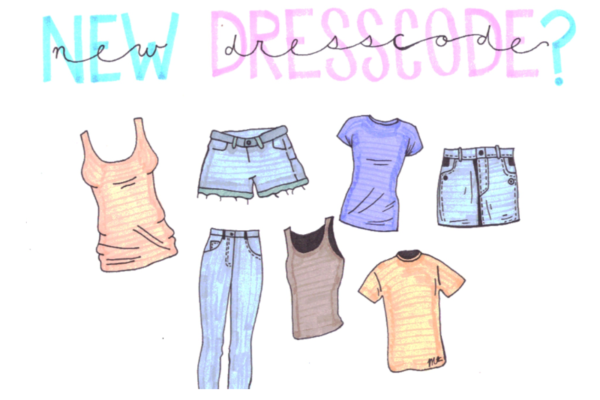Trendy or wasteful? The problem with trends and over-consumption
“Trends prey on our insecurities about the way we look and feel, encouraging us to consume more in order to stay on trend,” Leader of the Sustainable Fashion course at the University of Falmouth Tom Crisp said.
Every year, Christmas lists with wishes for the latest trendy styles and products are secure in parents’ back pockets as they go shopping for the holidays. However, what most parents don’t know is that the Ugg boots or the Zara jacket they have bought for their child will likely end up in a donation bin within the next few months. So, even though these trendy, new styles may currently fill many people’s Instagram feeds and shopping carts, they won’t stick around for long as new trends will be in fashion within the next month.
Thanks to social media platforms, and especially TikTok, trends can be created with a click of a button, rather than being passed down to consumers in what is called the “trickle-down effect”. Investopedia describes this trickle-down effect as a process in which a new style makes its way from the higher class to the lower class. In other words, this is a long process in which trends are passed from the runway to designer stores, to malls, and eventually to the clearance aisle.
Prior to social media, the trickle-down effect was the way businesses operated; the amount of time it took for trends to be showcased in the days before mass communication and advertising. Now, smartphones and the regular use of technology in everyday life have allowed companies to advertise their products faster, more efficiently, and to a much wider market of consumers. Ultimately, this has caused the trend cycle to speed up at an alarming rate and something new seems to be trending every couple of weeks.
What’s wrong with being on trend though? Trends are often fun to participate in and can make people, as far as clothing trends go, feel like they fit in or are a part of something bigger. However, trends are not made to last and the items are often worn only a few times before they are retired from a person’s closet.
According to Earth.org, the number of times a garment is worn has gone down by about 36 percent in the last 15 years. They also reported that the average American consumer throws away around 81.5 lbs. of clothes each year. This wastefulness is not only an enormous problem for the environment, but it is also leading to rising amounts of textile waste.
Boston University’s School of Public Health reports that out of all garments discarded, 66 percent end up in landfills with some taking decades to decompose. These landfills often take up large amounts of space, destroying environments and polluting the air, water, and living conditions of those around them. So, the recent acceleration in the trend cycle could lead to growing numbers over the years, making our already questionable climate condition even more unstable.
In addition, the textile industry is also responsible for ten percent of global CO2 emissions each year according to TreeHugger.com. Carbon emissions add more carbon dioxide to the atmosphere, creating a supercharged greenhouse effect that speeds up the process of global warming. The textiles most fast fashion companies use are derived from petrochemicals that are produced using nonrenewable resources, which then in turn release large amounts of carbon emissions.
Many large companies also overproduce clothing and products in order to keep up with the fast-moving trend cycle. This can throw off the companies’ supply and demand balance when a trend fades and they are left with piles of unsold garments. The products that don’t get purchased end up being burned in an incinerator or are taken to a landfill, contributing to the growing rates of textile waste and carbon emissions.
However, trends can have a large economic impact on America. According to an article on Panaprium.com, fast fashion is responsible for the recent growth (on average 4.78 percent) and future growth (5.91 percent in the next three years) of the apparel industry. Trends can lead to more engagement in the economy as well. When people are constantly buying things, it stimulates the economy which may be extremely helpful especially as America is on the cusp of a recession.
Fast fashion and trends are also responsible for the significant growth of the apparel industry within the past 20 years and have changed the way people purchase clothes. This mass-produced clothing system has become the most significant contributor to the fashion industry, allowing room for my trends and styles to be accessible to ordinary people. Fast fashion’s low prices and instant gratification have also led to high profits for companies.
Still, trends and overconsumption’s effect on the environment far outweigh their effects on the economy. Being on trend for a couple of weeks isn’t nearly as important as protecting the environment and living sustainably.
Websites like Good On You can help consumers identify which brands use ethical and sustainable methods of production as well as produce long-lasting and well-made products. By investing in sturdy and classic pieces rather than participating in every single trend or fad, people can help slow down the trend cycle and therefore also cut down the numbers on textile waste.
Obviously, there is a long way to go to be able to fill the large footprint the rapid trend cycle and its resulting textile waste has made on the earth, but if everyone does their part and does not engage in overconsumption and reduces their participation in the trend cycle, we can be one step closer to making the world a cleaner and more sustainable place.





